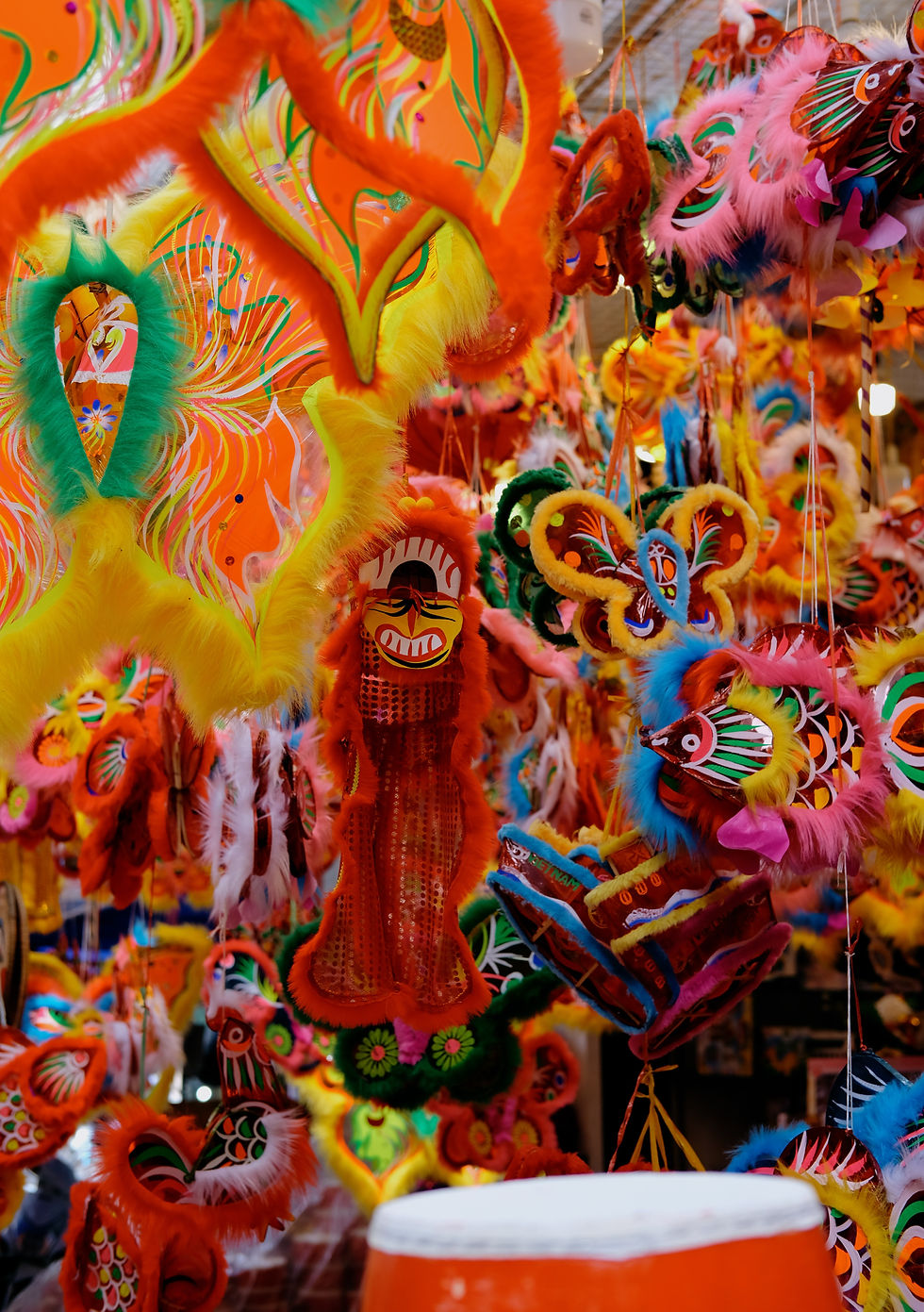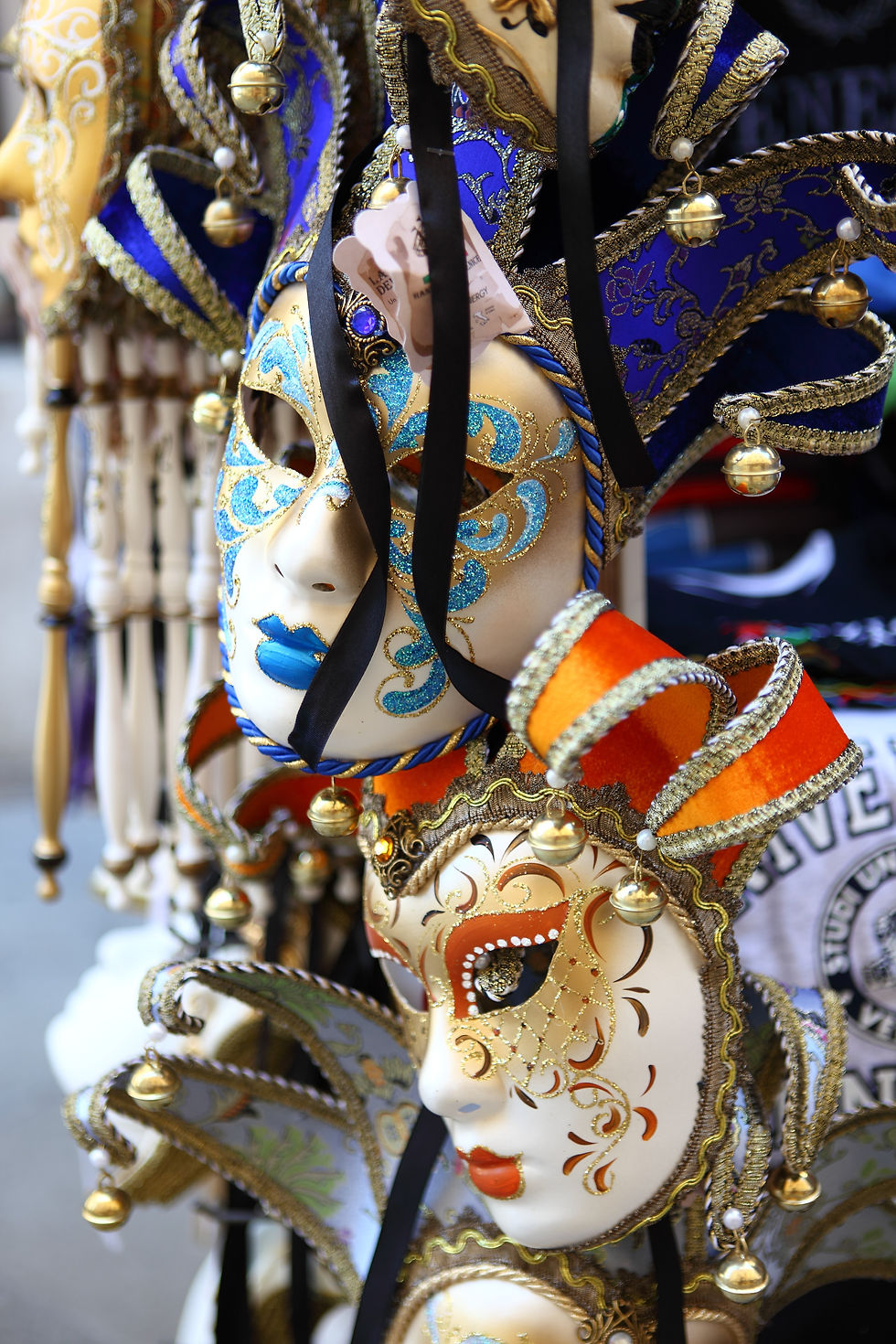Discover the origin of Mardi Gras and Nice Carnival – A good reason to visit Provence during Winter
- virginieinprovence
- Jan 21
- 3 min read

As in many countries around the world, we celebrate Mardi Gras in Provence. It's a good opportunity to go to the carnival and dress up.
Where does "Mardi gras" come from?
A Christian tradition originating in Antiquity, “Shrove Tuesday” is the last day before Lent. Lent is a period of 40 days, during which Christians are led to fast to remember the 40 days that Jesus spent in the desert. In this sense, the term "fat"of "mardi gras" refers to all those rich foods that can no longer be consumed during this period of fasting. Mardi Gras therefore authorizes all excesses by
celebrating decadence before entering this period of temperance.

What happens on "Mardi gras"?
The carnival! On “Mardi Gras” day, everyone dresses up! Indeed formerly, this day made it possible to transgress the rules, all the excesses and absurd things were allowed. At the time, the rich disguised themselves, made faces as poor, men dressed as women... Everyone transgressed the established order and this, in complete freedom.
Nowadays, the time is no longer for social upheaval, but the idea of transgression remains. The disguise is always in the spotlight, and the parades are much more supervised. The most famous carnivals are: Dunkerque, New Orleans, Venice, Rio et Nice.

The Carnival of Nice: a very popular carnival
Each year the Nice carnival attracts several thousand spectators. It is considered the third largest carnival in the world after that of Rio and Venice.
Each year the Nice carnival attracts several thousand spectators. It lasts 2 weeks and this year it takes place from Saturday 17 February to Sunday 3 March. Between decorated floats, flower battles and musical groups, the party will be there. Each year, there is the choice of a theme. This year, the theme is “The Treasures of the World”.
How was the Nice Carnival was born ?
1294 is the date when the first mention of the Carnival by Charles of Anjou appears. He speaks of the "joyful days of Carnival"during his visit to Nice. But it was on February 23, 1873, that the first Carnival entered the city of Nice. The first "flower battles" will be created 3 years later. Originally, these are simple exchanges of flowers. But they soon became an institution.
The Carnival corsos
The “Corsos Carnavalesques” are the Carnival floats. Each year, the floats are decorated according to the chosen theme. It is the illustrator who gives the idea while the reveler creates the float. The float parade through the city and allow the public to admire the procession made up of the King, the Queen and their subjects. The floats are illuminated when they parade in the evening.

Flower battles
Writer of German origin, Alphonse Karr is at the origin of the first battle of flowers. On the advice of Alphonse Karr and the Count of Cessole, Andriot Saëton created the first battle of flowers in 1876 on the Promenade des Anglais. From that date, the flower battles will become a highlight of the carnival. Over time, the flower battles take the form of shows organized by the city, and go beyond the status of “participatory” shows in horse-drawn
carriage parades and flower-decked cars.
Float construction
The floats are decorated by hand by the florists. They stick thousands of petals and flowers one by one in foam breads. In total, more than 300 stems of fresh flowers are needed to make each float. The most used flowers are roses, daffodils, mimosa, gladioli, carnations. 80% of the flowers used come from local producers.

The costumes
Regarding the preparation of costumes, it takes between 60 and 200 hours of work for the most complex. For 4 months, the craftsmen will make unique models, in order to bring the flowery scenes to life during the carnival.
I had the chance to attend part of the Nice Carnival this year. I highly recommend it. I also advise you to book the parades or flower battles you want to attend in advance.
If you come to my place for an immersion stay in Provence, I will make you discover the different aspects of Provence: the landscapes and the scents, but also the culture, the gastronomy... while helping you to improve your French. See you soon in Provence!
Virginie In Provence






Comments